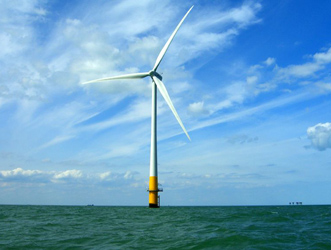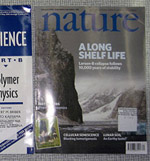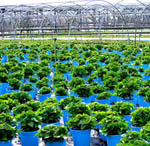Making offshore renewable energy good for marine habitat
A group of scientists have published a paper in the Journal of Applied Ecology that tries to reconcile the push for clean energy sources in marine environments - i.e. offshore wind farms and wave energy - with the  Offshore Wind Farm, Thames Estuary, UK. Image credit, Phil Hollmanconcern about the impacts that these projects can have on biodiversity.
Offshore Wind Farm, Thames Estuary, UK. Image credit, Phil Hollmanconcern about the impacts that these projects can have on biodiversity.
The scientists, associated with the Peninsula Research Institute for Marine Renewable Energy (PRIMaRE), make the case that these projects - if done right - may be able to improve rather than harm ocean habitat. They tout the potential benefits of using the submerged infrastructure associated with these projects to create underwater reefs and the possibility that these energy-producing zones could become marine protected areas that restrict fishing.
While wind farms have mostly been on land, companies have been increasingly pushing to put turbines offshore to take advantage of constant high-speed winds. The potential to capture waves for energy is still pretty new with just a few pet projects but it holds promise as the technology improves. The researchers provide a pretty thorough review of the negative impacts that marine energy projects can have on marine life and birds. They also present potential benefits. I outline these positive and negatives below:
Potential negative impacts to ocean biodiversity:
1) Habitat loss / degradation - Offshore wind farms and wave energy systems are unlikely to cause large direct habitat loss - the sitting doesn't take up that much space. However, in some cases local effects could be significant - for example if wind farms were situated in area near sea ducks whose foraging habitat is restricted to very specific areas.
2) Collision / entanglement - Terrestrial wind farms can kill birds from direct strikes. They also reduce abundance in the area through bird avoidance. Little research has looked at the effects of marine wind farms on birds. Underwater infrastructure associated with facilities could cause harm through collisions with marine life. But marine life entanglement with cables and moving parts poses a more likely problem. Our understanding of these potential impacts is very poor.
3) Noise - The noise generated from facilities - especially during construction - may impact acoustically sensitive marine life such as mammals but more research is needed.
4) Electromagnetic fields - Submarine electrical cables needed to transport power from devices to the mainland could affect magnetosensitive species such as bony fish, elasmobranchs, marine mammals and sea turtles. Again our understanding of the potential for this is very poor.
Potential benefits to ocean biodiversity:
1) Artificial reefs - Submarine infrastructure could be designed in a way to provide underwater reef habitat that could be beneficial to marine biodiversity in otherwise degraded areas.
2) Fish aggregation devices - Some manufacturers are developing floating wind turbines (as opposed to being secured to the seafloor). The floating action of these facilities can have the effect of attracting fish. If fishing were allowed, this could be very problematic. But in conjunction with marine protected areas (see below), this might have conservation benefits.
3) Marine Protected Areas - Marine renewable energy facilities will preclude certain types of fishing gear from being used in the immediate vicinity creating de-facto protected areas. The designation of these zones as official protected areas would be even better. Research has shown that marine protected areas can increase density, diversity, size, and biomass of species compared with the surrounding areas. Therefore, these renewable energy zones could contribute to the recovery of some depleted species.
The question is whether the positives outweigh the negatives. Or better yet whether conservation science and engineering came come together to optimize the positives and minimize the negatives. The authors recommend:
"It is critical that all stakeholders, including energy companies, engineers, local communities, governmental and non-governmental organizations, fisheries, and academic institutions, are involved at all stages from design, siting, pre-construction monitoring ⁄ impact assessment, construction, operation and decommissioning."
--Reviewed by Rob Goldstein
Inger, R., Attrill, M., Bearhop, S., Broderick, A., James Grecian, W., Hodgson, D., Mills, C., Sheehan, E., Votier, S., Witt, M., & Godley, B. (2009). Marine renewable energy: potential benefits to biodiversity? An urgent call for research Journal of Applied Ecology DOI: 10.1111/j.1365-2664.2009.01697.x
 2 Comments |
2 Comments |  Read More
Read More 



Reader Comments (2)